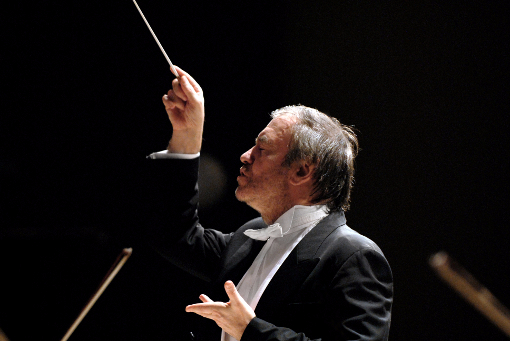Chaos theory: Gergiev, Munich Philharmonic unsettled yet inspired at Carnegie Hall

Valery Gergiev conducted the Munich Philharmonic Monday night at Carnegie Hall. File photo: Alexander Shapunov
Valery Gergiev, once famously peripatetic, is now an infrequent visitor on the New York concert scene. Perhaps he’s settled down a bit; after a decade as music director of the London Symphony Orchestra, he is now in his second season as music director and conductor of the Munich Philharmonic.
He brought that orchestra into Carnegie Hall Monday night for a two-concert visit. The program of Beethoven and Ravel was a wild, thrilling reminder of the wonderful, throwback music making that Gergiev delivers when at his best.
The Munich Philharmonic is a fine orchestra with colorful woodwinds, mellow brass, and an unusual dark string sound. On top of that, they have a modern polish, but this concert was less about orchestral technique, than expression, excitement, and emotional impact.
Those qualities were in abundance, as was surprise. The orchestra started with a singular performance of Ravel’s La Valse. To hear Ravel through such a dark and weighty sound was out of the ordinary already, and keenly intriguing. Even more, from the remarkably dark and atmospheric opening the performance was centered around a sensation of chaos.
This was chaos as interpretive gambit, not incompetence, with gusts of music rising and falling from different sections, creating whorls of kaleidoscopic activity. Gergiev, shaking his hands in front of his body in lieu of standard conducting technique, brought these waves of sound together in punchy, tightly coordinated, cadences, only to rebound into more waves of passionate mystery.
At first, one felt a sense of tension, anticipating an impending collapse. But one quickly gained confidence in the musicians, and the performance became fascinating and rousing. The grand waltz tune itself, part parody and part tribute, was impeccable, powerful, and full of energy.
Pierre-Laurent Aimard’s brilliant touch and precise technique at the keyboard led the way in Ravel’s Piano Concerto in G. The performance was centered around his playing, and the orchestra switched to a tight precision in its accompaniment.
Aimard’s unselfconscious approach made a smooth fusion of the French and Gershwin-esque music in the first movement. In the lovely “Adagio assai,” he demonstrated the profound importance of simply laying out the notes, one after the other; like kindling, each was a piece in a slow-building, substantial fire. The final Presto burst with Ravel’s colors, all shaped and defined by the pianist’s exactitude.
As an encore, Aimard played an impossibly fluid and fast Étude No. 6, “pour les huit doigts”from Debussy.
With Beethoven’s Symphony No. 3 Gergiev and the orchestra returned to the emphasis on expressive effect, on dramatic tension and release.
There was indeed tension, but of the wrong kind at the start of this “Eroica”; through the opening bars the orchestra seemed to be trying to figure out the location of the downbeat and the tempo. Finding common ground, the music began to cruise forward at a healthy pace and with vigor. Still, there were occasional moments of confusion, with views of where the pulse lay varying by section, and each recapitulation of the main theme beginning with some confusion.
This could be fairly seen as disinterest in ensemble details. But on the scale of values, Gergiev put the weights on the side of a Fürtwangler-esque search for the purpose and meaning of the music. The goal was to forcefully affect the listener, and he achieved this marvelously through attention to the larger scale and direction of the music, the journey through the experience of memory and transient emotions.
Still, all was not perfect. After a furious and exhilarating opening movement, the “Marcia funebre” opened flatly. But from the start of the fugue the orchestra churned up deep emotions, with Gergiev audibly urging them on. This was truly fateful music.
The Scherzo was fleet and bright, with extroverted, warm playing from the horns. The tempo in the finale was fast, and the playing forceful, headlong energy nearly swamping some the variations. Having experienced agony and pleasure, the music making was now about velocity.
Prior to the coda, when Beethoven recapitulates the music that has come before, the playing was slow and rich with stürm und drang. The coda and final bars were explosive, capping an Eroica that, for all its unsettled moments, was as true to Beethoven’s intentions as one will ever hear.
Valery Gergiev, the Munich Philharmonic, and soprano Genia Kühmeier perform Debussy’s Prélude a l’après-midi d’un faune, Schubert’s Symphony No. 4, and Mahler’s Symphony No. 4, 8 p.m.Wednesday. carnegiehall.org